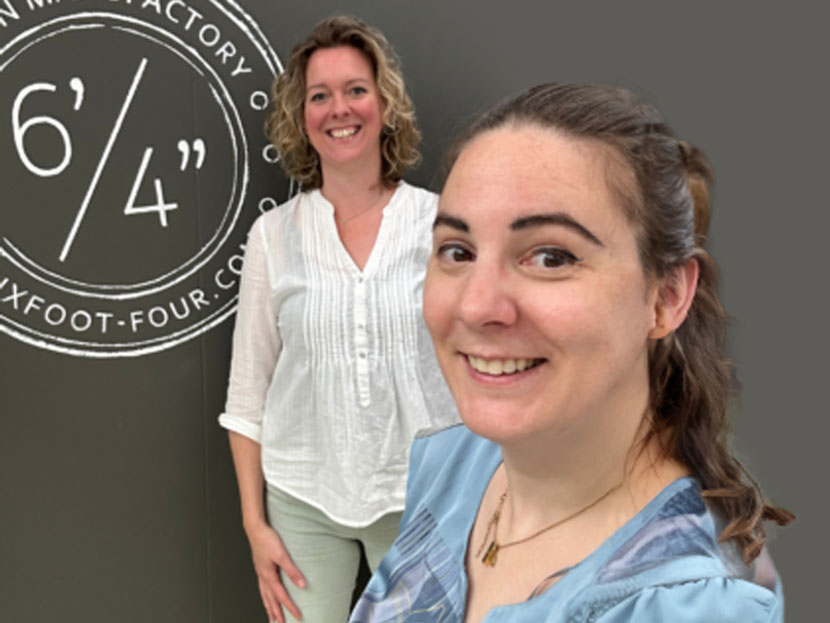Why does UX for machine engineers matter so much? What does it actually mean? Read in this interview with Anke Horstman of TechGirl Nederland how design thinking makes the difference.
You’re a product designer. How do you go about it and what exactly do you do?
Franziska: “I am originally an industrial designer, but now I apply the design process in more and more areas to help my customers with innovation and product development.
It’s about solving a problem for a specific situation and a specific user. This process can be used for a wide range of purposes.”
So you’re not only working on hardware, but also on the software side and all aspects of it.
Franziska: “One of my biggest clients so far started with a software project. Repak wanted a HMI redesign for their machines in the food industry. These machines are operated via a touch screen.
Back when the old interface was created, it was very progressive. But in the meantime it was very outdated in terms of ease of use and appearance.
It’s about optimizing people’s entire user experience. You have to make it as easy as possible for a person to use a product, in this case to use a machine.
My client’s client doesn’t do that because they are so big people lovers. But because it saves money and time. The machine is less likely to get stuck, you can achieve more, you need less money for training and so on, so you can put even less skilled personnel to operate the machine.
To achieve that, you have to design smartly so that it is self-evident how the machine should be operated.”
I sometimes feel that speed or the ‘fanciness’ of certain products are more important to a company than how you arrange it on the back end or how you use it. How do you see this?
Franziska: “A good product has to meet a lot of requirements. I always talk about the holy trinity: first of all, it has to work, or ‘it needs to be feasible’. If you have a product that doesn’t work, you can also stop immediately.
Secondly, if you do it commercially, it also has to yield something. So it should not be too expensive and there should also be a market of people who are willing to buy this product. Otherwise, it’s just a hobby.
The third point is the attractiveness or desirability of a product. Would users also like to (continue to) use this? It’s not just about the first impression, but also about continuing to use a product.
How frustrating is it if, for example, you can’t set the different modes properly on the display of your e-bike. Or if you need to log in to a certain app and it just doesn’t work just because a certain box isn’t checked.
Consumer Experience or User Experience is extremely important. Especially with the new generation of young people. They grew up with all kinds of internet and apps on their smartphones. They are used to everything working just as addictively well as TikTok and snap-chat.
This is also increasingly expected of other things in your environment.
Suppose a low-skilled operator stands in front of such a machine and says: ‘What am I supposed to do with this? I can’t even scroll’. You want everyone to see right away: ‘ah yes, I have to do this, then that will happen’”.
In my opinion, you have focused more on the hardware before. You are now also involved in the software. Is that transition difficult?
Franziska: “It’s not that weird when you think about it. I have a good example of this from my time at Nokia. I then worked on a future project, a dual-screen mobile smartphone. How do you design something like that?
We worked very closely with the UI and UX team. Depending on how those screens sit next to each other, it has a big impact on how you use the phone. For example, do they slide over each other or are they folded and in what way?
We had a couple of test scenarios on how to use two screens. Suppose you want to write an e-mail, on one screen is the e-mail and on the other one you type.
But it’s a phone, so you’re getting a call. What happens then? Where do you see that ‘please pick up’ notification appear? How do you answer? Do you hold both screens to your ear or do you slide everything together first?
The physical properties determine the interface, and vice versa. You can’t have one without the other.
So no hardware without software?
Franziska: “Exactly. It’s about making the human experience, the human use of your product as optimal as possible.
If you want people to keep using it, it has to be pleasant for people.”
Listen to the entire podcast here (in Dutch):

